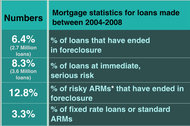Fusion, the forthcoming cable channel that is a joint venture of ABC News and Univision, now has a premiere date — Oct. 28 — and a prime-time schedule.
Five hours of evening programs were announced on Thursday, highlighted by “America with Jorge Ramos,” an 8 p.m. news program hosted by Mr. Ramos, a veteran of Univision. The prime-time schedule will also include a sports comedy talk show and a news satire developed by a former producer of “The Daily Show.”
The joint venture to create a next-generation cable news and lifestyle channel for bilingual Latinos was announced in mid-2012. Back then the partners had hoped to start the channel by early this year; later they aimed for the late summertime. The Oct. 28 premiere is the first specific date they have publicized.
The news release that included the date also indicated that Fusion’s intended audience had broadened a bit. Previously, the marketing language for Fusion has focused only on Latinos; now the channel is calling itself “a news, information and lifestyle network for Latinos and millennials,” suggesting that it wants to reach a young audience regardless of race or ethnicity.
Fusion’s prime-time schedule reads a lot like a cable news channel programmed for the kind of young audience that mostly eschews existing cable news shows.
At 6 p.m. Eastern, Derrick N. Ashong will host an hour-long interactive show called “D.N.A.” about what Fusion called “a wide variety of socially relevant issues.” At 7 p.m., Alicia Menendez, a former host of HuffPost Live, will have “a fresh take on stories at the intersection of sex, money and politics.”
Mr. Ramos’s flagship program at 8 p.m. will be followed by two half-hour programs. The 9 p.m. slot will be filled with “Sports Bar,” a show with sports talk, comedy sketches and audience interaction. The 9:30 p.m. program, as yet untitled, will be produced by David Javerbaum, who was an executive producer of “The Daily Show” from 2006 and 2012. Fusion said the program would be a news satire show, suggesting similarities to “The Daily Show.”
Rounding out the schedule at 10 p.m. will be “Open Source with Leon Krauze,” a talk show hosted by Mr. Krauze, who anchors the evening news for KMEX in Los Angeles.
“We believe our programs — visually compelling, creatively produced and laced with humor and irreverence — will resonate with Latinos and non-Latinos alike,” said Beau Ferrari, the acting president of Fusion, in a news release. “Fusion’s unique combination of news, satire and original series is a completely new offering for the most exciting and fastest-growing group of young people in the country.”
What Fusion still needs are more distributor deals. Several television distributors, including Cablevision, Charter, Cox and Verizon FiOS, have agreed to carry the channel, but the four biggest distributors in the country, Comcast, DirecTV, Dish Network and Time Warner Cable, have not.
The Walt Disney Company, which owns ABC News and is handling distribution negotiations, has three more months to secure broader carriage.
Fusion is one of several new entrants to the fiercely competitive cable marketplace. Pivot, a channel for the millennial generation owned by Participant Media, came on television Thursday morning. Al Jazeera America, a domestic version of the international Al Jazeera news brand, will have its debut on Aug. 20.

Article source: http://www.nytimes.com/2013/08/02/business/media/fusion-announces-premiere-date-and-prime-time-schedule.html?partner=rss&emc=rss
